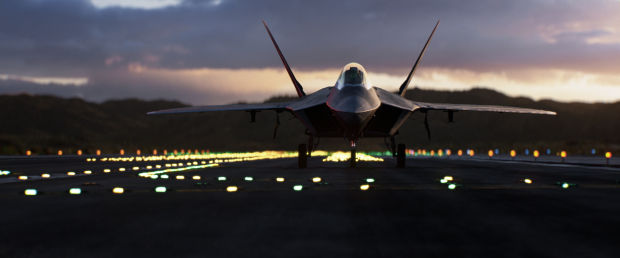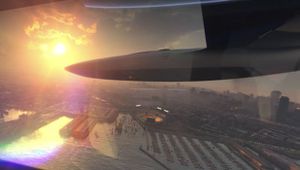
Bipolar Studio’s Cinematic Porsche 'Encounter' Wins CGI Category at AICP Post Awards

Bipolar’s Porsche 'Encounter' won the CGI category at 2019’s AICP Post Awards held last week in Chicago. Competition in the category was stiff, with Bipolar besting industry frontrunners The Mill, MPC and Digital Domain for the honor. Bipolar worked entirely from a blank slate to bring the film to life, which they conceptualised, directed and produced end-to-end working entirely in CGI.
Since 2016, the pioneering creative studio with capabilities spanning VR, VFX, live-action and ideation has been quietly creating some of the industry’s most exciting work. Earlier this year they worked with Ford to produce a 3-minute cinematic VR short 'Superbowl Fan Journey' that screened at the Super Bowl showcasing their experience in driving customer engagement for big brands. Here, Bipolar discusses the genesis of Porsche 'Encounter,' and how they brought it to life.
Q> How did Bipolar arrive at the idea for Porsche 'Encounter' and how did the film take shape?
Bipolar> We wanted to create a cinematic with the Porsche 911 Turbo S that felt more like a short or a segment from a film, rather than a typical commercial. And we wanted to test how far we could push the boundaries of automotive CGI. Our goal was to make the project entirely computer-generated and yet, entirely photo-real.
Our concept was simple — two pilots in two different vehicles converge at high speeds, aligning with each other for a brief encounter. We also wanted it to take place entirely during the twilight hour, which made it almost impossible to shoot. So we decided to do it all entirely computer generated. We wanted people to ask us, “How did you guys shoot this?” Everything was meant to be 100% photoreal.
Conceptually, it was important for us to capture the dual nature of the vehicle — the minimal, almost sculptural beauty with the brutal force that propels it into motion. Through art direction, cinematography and animation we brought this feeling out, a feeling that in one word we defined as ‘brutality.’
Q> 'Encounter' could be a pivotal scene from a big-budget thriller. Why was Porsche the right brand to partner with?
Bipolar> Simple. We love Porsche as a brand, everything from the look, high performance and legacy. We’re definitely fans! And we had an opportunity to craft our vision for this piece as we wanted, so we pushed “Encounter” as far as it could go conceptually, visually and from the point of view of life-like computer generated imagery.
We were thrilled to craft this project from scratch, taking it all the way from the creative development, storyboards and pre-viz, and building out CG with full flexibility while having freedom to direct and change shots, refine lighting and the details all the way to the end.

Q> What was most challenging in terms of the CG?
Bipolar> We wanted to build this with flexibility in mind to have true creative freedom. Our custom process allows us to swap the Porsche 911 Turbo S with any other Porsche and just like that have a new spot. We also wanted to focus on the Porsche vehicle, down to the smallest of details. We added individual light bulbs inside the headlights for example. Pixel scale differences like that in many places are what allowed this to be indistinguishable from reality.
Product correctness was also super important for us, especially with an iconic car like the 911. We had to be incredibly thoughtful and precise with what angles we selected and every reflection flowing over the car, even the camera lenses were purposeful. Select a lens a little wide and the bonnet looks too long; lens a little too long and it looks too short and we lose its iconic shape. The 911s look best with very specific lenses and angles.
For the environment, we actually scouted many airfields. We used satellite photography for the airfield as a base. The character also had to look photoreal. We combined our process with detailed sculpting along with a body scan to bring him to life. Different lighting and atmospheric combinations were explored to visualize the overall feeling and mood along with the visuals. We spent a crazy amount of time perfecting the smallest details on the vehicle, from reflections on the body curves, to the texture of the paint, to the light bulbs inside the tail lights. We perfected every step in order to push the boundaries of the automotive CGI.
Q> How long did the project take end-to-end?
Bipolar> We were able to create the project in standard production timeline around 2.5 months to 3 months.
Q> Did you create any tools specifically for the CG pipeline?
Bipolar> We used this project as a sort of blank slate almost, to create a fully custom vehicle pipeline. It’s what allows us to create fully photoreal vehicles and yet have the freedom to light and art direct their look. Everything from the very precise suspension dynamics to materials and look are part of our custom vehicle pipeline. Being able to get this sort of photoreal quality gets rid of the huge expense and need to ever shoot them physically or use any custom physical driving rigs/robots.
The end result is better looking and a lot more cost effective, and, in addition, you have full freedom and flexibility to direct whatever shots you want and even be able to easily update parts of the vehicle like the wheels, exterior or interior package or even put in a completely different car instead with no problem. With live-action, if you want to add anything after the shoot or a new shot you won’t be able to without a reshoot. With our process, you never have to shoot anything again, twice.











